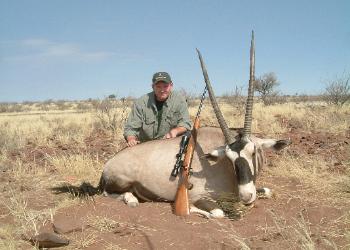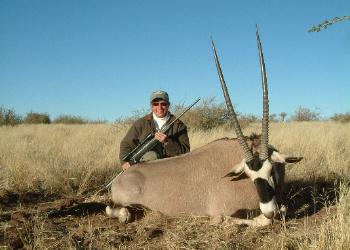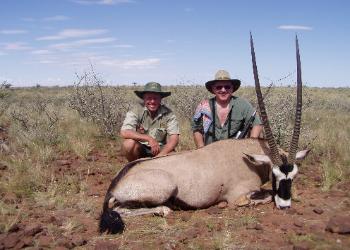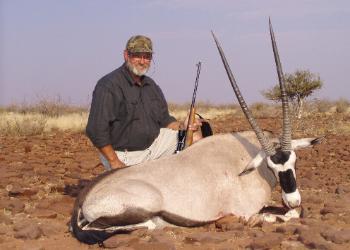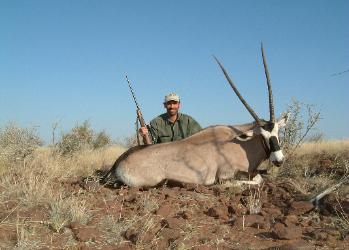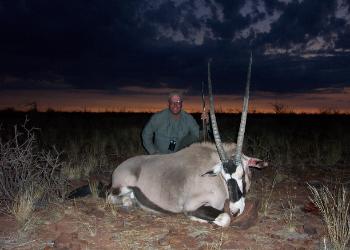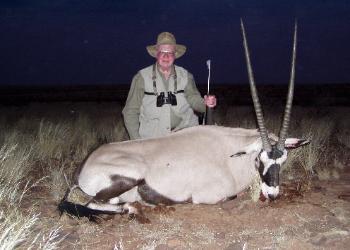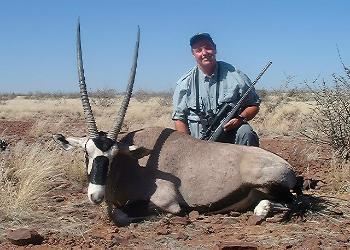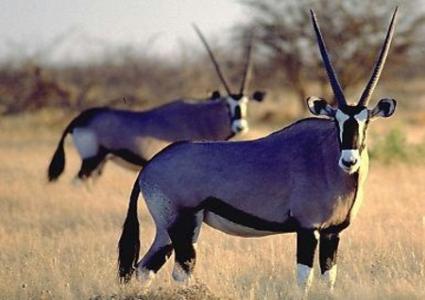
| Gemsbok (Oryx) |
Habitat
Arid and semi-arid grassland, scrub, light woodland, penetrating into savanna
woodland. Truly desert adapted, survives in the Kalahari and Namib deserts
without water.
Both sexes have horns. Males and females are difficult to tell apart unless the udder
or scrotum is visible. Males are slightly bigger and more heavily built than females.
Their horns are thicker but shorter and blunt. Spends up to 60% of day inactive, in
shade if possible to save energy and water and to avoid overheating. Body
temperature is allowed to rise during the day, then excess heat is lost at night.
Grazes for long periods at night when the moisture content of the vegetation is
higher. Blood flowing to the brain is cooled by heat exchange with blood flowing
from the nasal membranes in a network of vessels called the carotid rete. This cools
the hypothalamus, which controls the body's heat balance. Both males and females
are aggressive. Blows with the length of the horn and jabs with the tips are
common, and Gemsbok usually stay more than a horns length apart.
Primarily a grazer, but will browse if grass is not available, and dig for roots, bulbs
and tubers. Eats tsama melons and Gemsbok cucumbers for their water content.
Obtains minerals by eating soil and salt encrustation's at water holes.
Single calves are born any time of the year peaking in August to September after a
gestation period of 261 to 275 days. Females leave their herd to give birth. Calves lie
hidden for 3 to 6 weeks. The weight The weight of the bulls can be 240 Kg, and the
cows 210 Kg. They have a lifespan of around 20 years.
Arid and semi-arid grassland, scrub, light woodland, penetrating into savanna
woodland. Truly desert adapted, survives in the Kalahari and Namib deserts
without water.
Both sexes have horns. Males and females are difficult to tell apart unless the udder
or scrotum is visible. Males are slightly bigger and more heavily built than females.
Their horns are thicker but shorter and blunt. Spends up to 60% of day inactive, in
shade if possible to save energy and water and to avoid overheating. Body
temperature is allowed to rise during the day, then excess heat is lost at night.
Grazes for long periods at night when the moisture content of the vegetation is
higher. Blood flowing to the brain is cooled by heat exchange with blood flowing
from the nasal membranes in a network of vessels called the carotid rete. This cools
the hypothalamus, which controls the body's heat balance. Both males and females
are aggressive. Blows with the length of the horn and jabs with the tips are
common, and Gemsbok usually stay more than a horns length apart.
Primarily a grazer, but will browse if grass is not available, and dig for roots, bulbs
and tubers. Eats tsama melons and Gemsbok cucumbers for their water content.
Obtains minerals by eating soil and salt encrustation's at water holes.
Single calves are born any time of the year peaking in August to September after a
gestation period of 261 to 275 days. Females leave their herd to give birth. Calves lie
hidden for 3 to 6 weeks. The weight The weight of the bulls can be 240 Kg, and the
cows 210 Kg. They have a lifespan of around 20 years.
HOME | PAYMENT | DISCLAIMERS | CONTACT US
| 1-702-425-5086 |
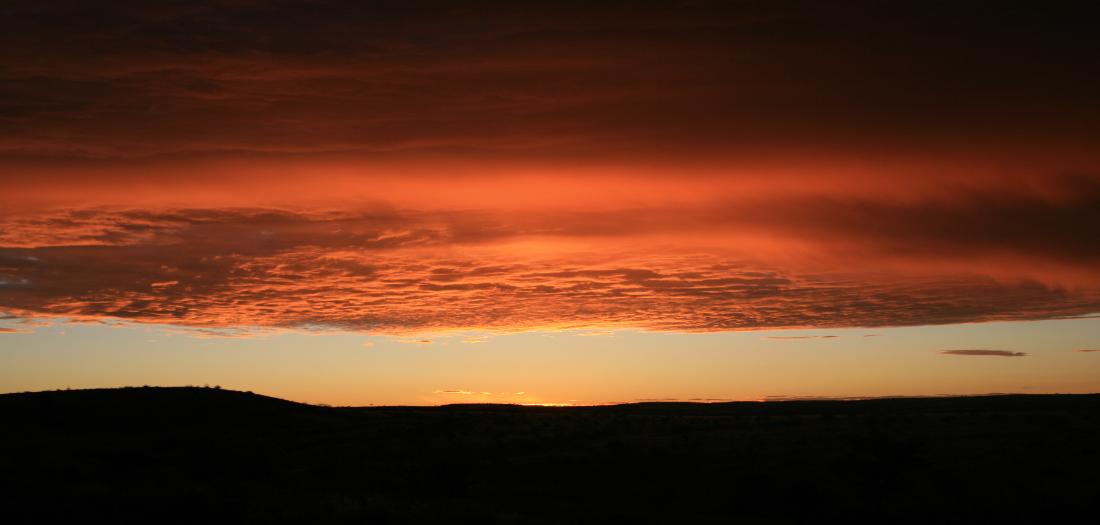
| Rennell Barney 702-425-5086 Kerry Barney |
| High Desert Safari Consultants |
